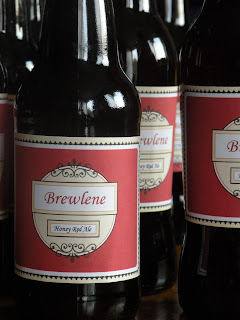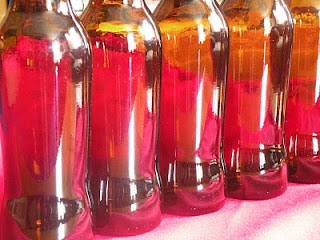
Spring has finally sprung. And, in Maryland that means the Preakness Stakes is just around the bend. The Preakness is the second race of the triple crown. The first race is the Kentucky Derby and the third is the Belmont Stakes.
xSo, what does all that have to do with food? Everything, if you are thirsty for a cool drink. That cool drink being the mint julep, the official drink of the Kentucky Derby since 1938. The mint julep was served in a souvenir glass that year for 75 cents. It has been proudly served every year since. This year there will be about 80,000 mint juleps sold at the Derby.
The mint julep is a spin off of an Arab drink called julab. Julab is made with water and rose petals. The drink was introduced to the Mediterranean region were people replaced rose petals for mint leaves, which were indigenous to the region.
There are basically to ways of make a mint julep. One, by muddling mint and sugar together. And, the other by making a mint syrup. Of course, good Kentucky bourbon is added to both methods, along with crushed ice. I tried both and I prefer the mint syrup method. It does take a little more time, but you do have enough syrup to make several drinks.
Horse racing fan or not, the mint julep is a winner.
Mint Julep4 mint leaves
2 cups ice
2 tablespoons mint syrup (see below)
2 tablespoons water
2 ounces Kentucky bourbon
Place mint leaves and ice in blender. Pulse until crushed. Fill glass with crushed ice. Add remaining ingredients. Garnish with mint and serve.
Mint Syrup1 cup granulated sugar
1 cup water
1 bunch fresh mint leaves
In a medium saucepan, combine sugar and water. Bring to a boil. Remove from heat and add mint leaves. Cool. Pour syrup into a jar, seal and place in refrigerator. Remove leaves after 24 hours. Syrup will keep for several weeks refrigerated.
xMint Julep Day is May 30th
xAnd for the horse racing fans:
Kentucky Derby is May 7th
Preakness Stakes is May 21st
Belmont Stakes is June 11th
 Happy New Year everyone. As the year ends we all tend to reflect on all we have done and would like to do in the coming year. Of course, my 'to do list' always centers around food.
Happy New Year everyone. As the year ends we all tend to reflect on all we have done and would like to do in the coming year. Of course, my 'to do list' always centers around food.














 Think of spring and you may think flowers, yellow peeps and hay fever. You rarely think of beer. Bock beer to be exact. Bock is the term for a strong lager of German origin, which is made to be consumed in the spring. Bock is brew in the fall and aged through the winter and enjoyed in the spring.
Think of spring and you may think flowers, yellow peeps and hay fever. You rarely think of beer. Bock beer to be exact. Bock is the term for a strong lager of German origin, which is made to be consumed in the spring. Bock is brew in the fall and aged through the winter and enjoyed in the spring. 

